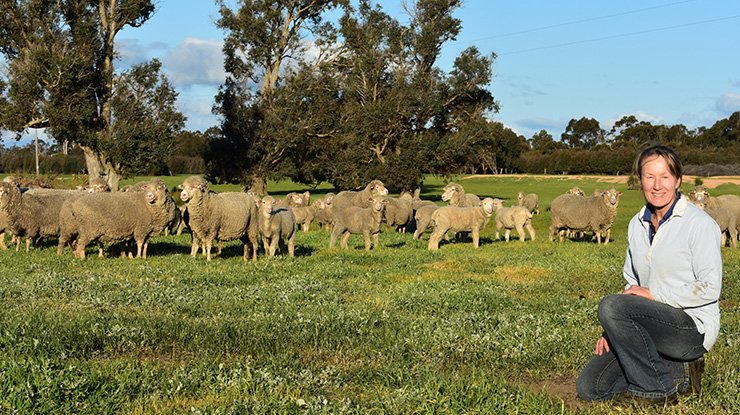
WA Merino breeder Lynley Anderson.
WESTERN Australian Merino breeder Lynley Anderson has worked hard to improve lamb survival for years, but didn’t realise her strategies were also reducing dystocia in her flock.
But Murdoch University researchers conducted autopsies on lambs in Lynley’s flocks as part of a separate lamb survival project and the results of those studies helped inform a dystocia study funded by Meat & Livestock Australia.
The study showed dystocia, or difficulties during birth, is a major contributor to lamb and ewe mortality – responsible for at least 50 percent of lamb deaths.
“Autopsies on our lambs confirmed we have very low levels of dystocia.
“The research validates what we have been doing since 2002, which was very gratifying,” Lynley said.
Lynley’s on‑farm strategies include ensuring ewes are a condition score of 3 or better at joining and maintaining this right through to lambing.
“We’ve always scanned ewes and separated twins and singles so we can manage them separately.
“We reduce mob size at lambing, with the twins going into mobs of about 200 and the singles into mobs of 300,” she said.
MLA said one of the major benefits of scanning and managing singles and twins separately has now been shown to be reduced levels of dystocia and improved lamb survival rates, yet adoption of this practice remains low.
Only about 30pc of Australian ewe flocks are being managed separately based on the number of lambs ewes are carrying.
Genetic selection can help
The dystocia research shows it may be possible to select against dystocia using indicator traits including lambing ease and lamb size, weight and conformation at birth, along with other lamb survival and ewe rearing ability traits.
Reproductive performance is a priority for Lynley across her stud and commercial flocks.
She generates Australian Sheep Breeding Values (ASBVs) for birth weight and lambing ease in her Merino stud flock, and culls any ewes in the Merino stud flock, commercial Merino flock or her small Poll Dorset stud which fail to rear a lamb.
“Our aim is to make sure we’re not increasing birth weight. We want a medium‑sized lamb at birth, but one that grows quickly. That’s long been the aim in non‑Merino breeds, but now we want it in Merinos as well.
“Culling ewes which fail to rear a lamb is a good practice to introduce, as is only using rams with good ASBVs for lamb survival traits, along with scanning ewes and managing according to pregnancy status needs,” she said.
Source: MLA.



HAVE YOUR SAY